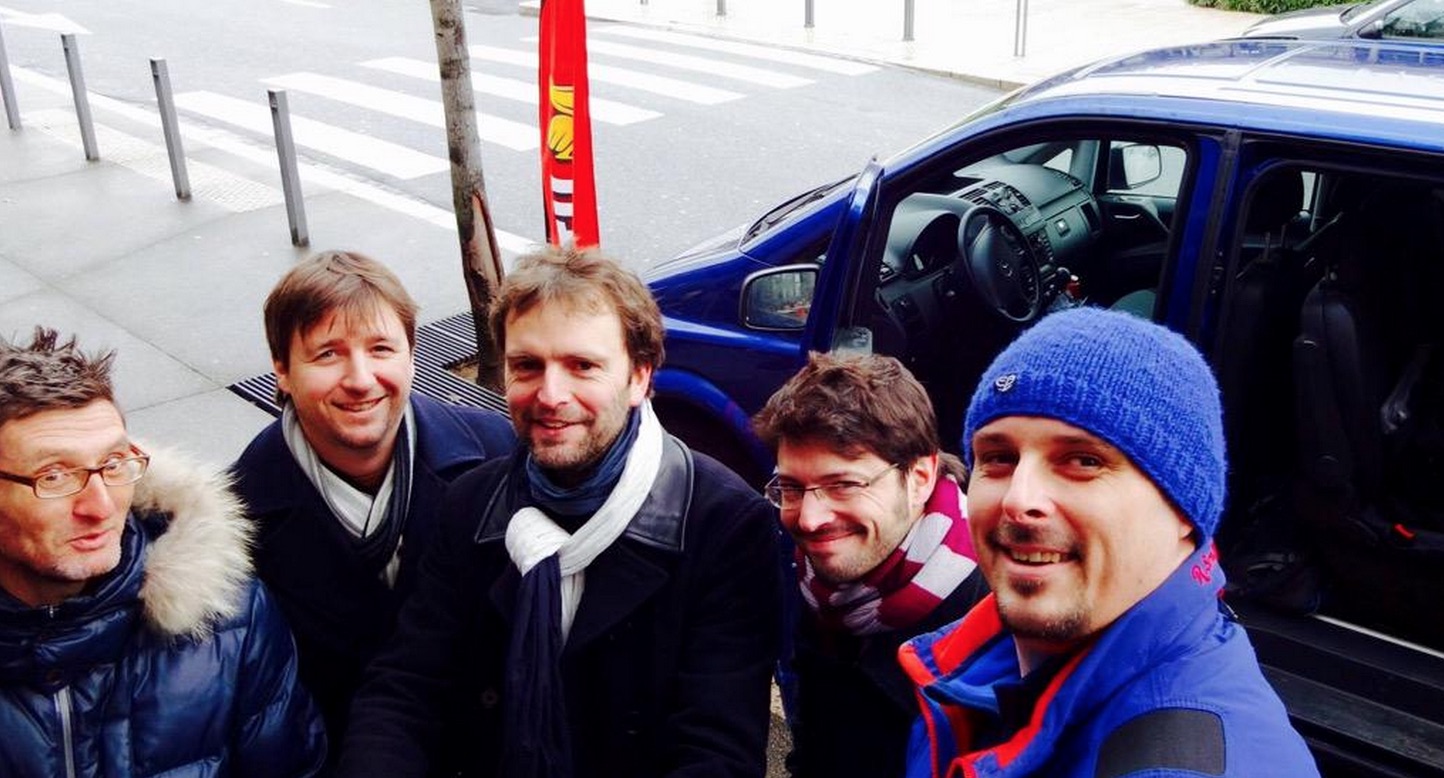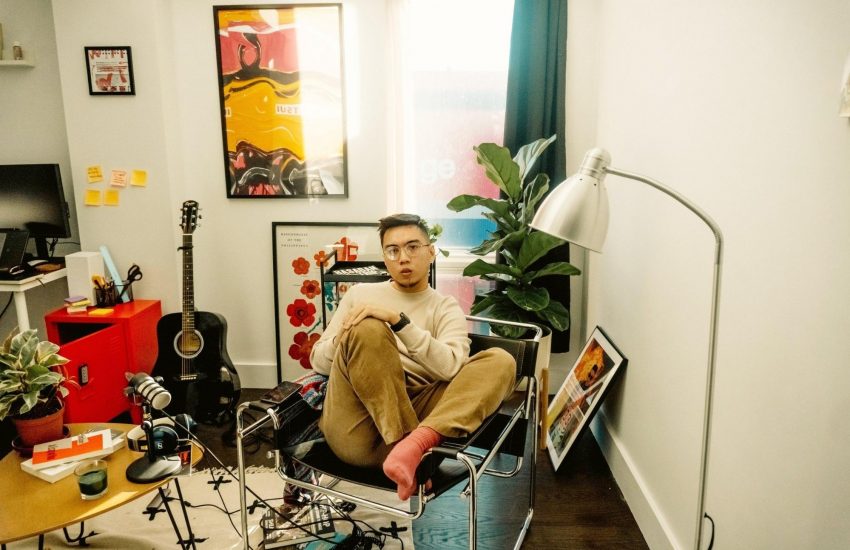Damien Van Achter on launching a mobile newsroom to road trip around Europe
Damien Van Achter, a Belgian journalist and digital literacy activist, and four of his students recently set out on a road trip to test the limits of mobile storytelling. They piled into a van at Van Achter’s media innovation lab in Éghezée, Belgium and traveled south through eastern France, ending in the foothills near Lyon. Along the way, they chronicled dozens of stops and interviews using Twitter, Vine, Soundcloud, and Facebook.

The four students were all reporters with the French newspaper La Montagne (The Mountain) taking a class called “Learning by Doing” in which Van Achter trains journalists in social media and reporting on local issues as they travel. The goal of this particular road trip was to report, in real time, on how farmers and small business owners are adopting technology.
Their virtual notes were posted in chronological order in an online visualization app custom built by Van Achter called Backtrack. [inlinetweet prefix=”” tweeter=”” suffix=”via @storybench”]Backtrack looks like Storify superimposed over an interactive map[/inlinetweet]. Along with the tweets, photos and videos describing their reporting trip, the Backtrack map pulled in stories the journalists filed along the way.
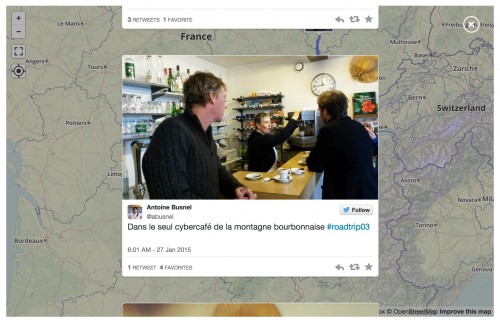
The journalists were able to file stories for La Montagne using the van’s Internet connection and power generator, amenities which together cost Van Achter 10,000 euros. He raised that money from 137 people on a crowd-funding platform called KissKissBankBank. His pitch? That he would launch a mobile journalism laboratory to cover events large and small from the flexible environment of a mobile newsroom. All of the content collected and generated would go up online as a transparent record of the process of mobile journalism. The public would be invited into the process by participating in online conversations before, during and after reporting trips. Van Achter says the project was funded in 48 hours.
“I’ve set up the van to be very very agile. I wanted to react to the news,” Van Achter told Storybench. [inlinetweet prefix=”” tweeter=”” suffix=”says @davanac”]“It makes sense to have conversations where people are.”[/inlinetweet]
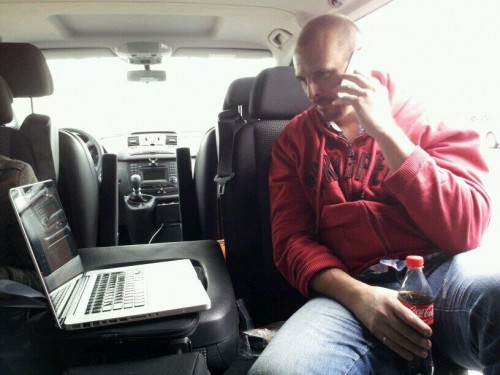
After five years covering politics and economics at Belgium’s national press agency Belga, Van Achter became interested in coding, WordPress, and social media. He began treating his blog like a lab where he could experiment with new tools and techniques. He also started running seminars on innovative media tools and workflow. He’s often referred to as a “digital sherpa.”
In 2008, RTBF (Belgium’s public broadcaster) offered him a role heading up social media strategy for the company. Van Achter began training journalists to operate in the digital landscape.
“Social media and interactivity are not the goal per se,” says Van Achter. “Tools have to serve a vision and serve a purpose which is to try and make people more aware, more intelligent, more able to make choices. That’s the whole point of journalism.”
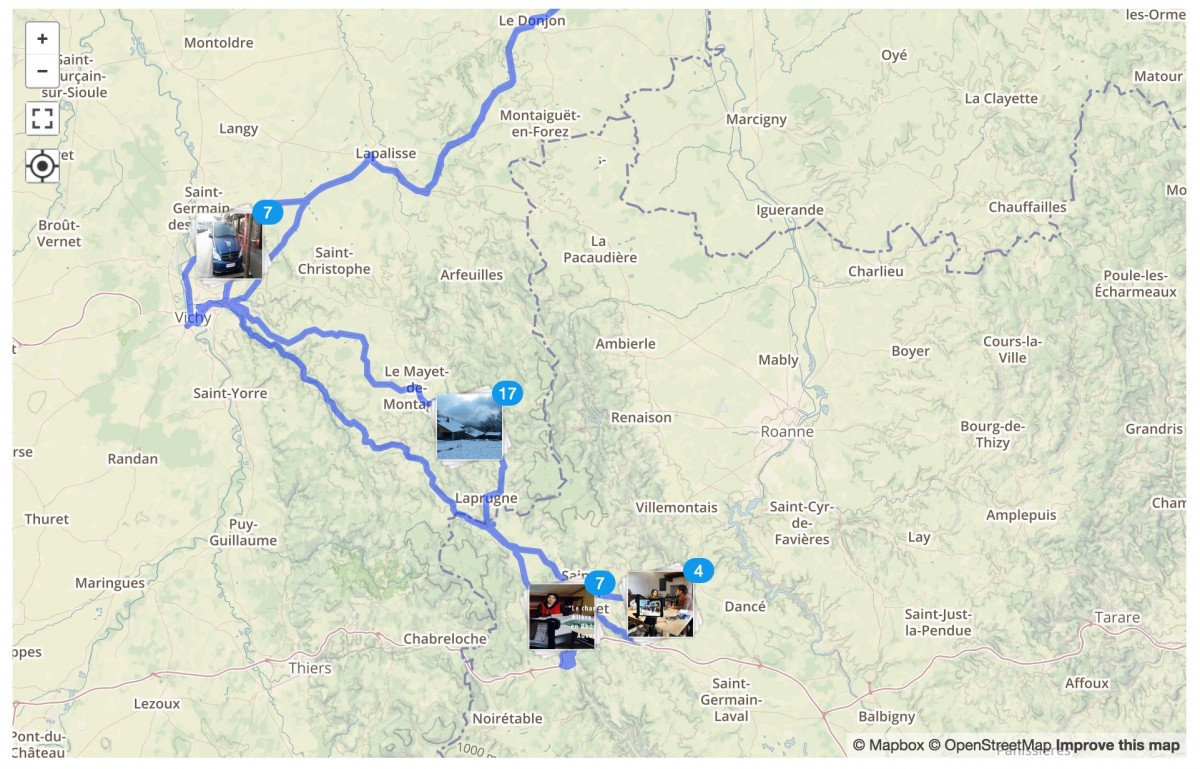
Van Achter later left his job at RTBF and moved to Paris to start working on a news application startup called Owni.fr. “[inlinetweet prefix=”” tweeter=”” suffix=”says @davanac”]Everything we built was with a team of journalists, developers and designers[/inlinetweet],” he says. “We built a news app for Wikileaks and a pedagogical app about shale gas in France. We built more than 50 projects for other media companies. That was part of the business model.”
But once the business began to peter out, Van Achter left the startup and headed back to Belgium to set up a media innovation lab, called Lab Davanac, within a startup incubator he helped found called NEST’up. He began teaching journalism at IHECS, a school of journalism and communications in Brussels. After advising media companies for almost a decade, Van Achter felt his efforts would best serve students of journalism.
“The media landscape has pretty much crashed everywhere and my feeling is that the more I can empower students, the [better] chance they’ll have to have jobs,” he says. And, he adds, the more likely they will be to create their own jobs.
Van Achter has long been thinking about mobile storytelling and the idea of a more agile journalism. Now he has a fully-equipped van to do it. So far, he has led ten reporting “missions”, as he calls them, in his mobile newsroom.
“I’m trying to have the mindset of taking risks, being entrepreneurial, failing, and building stuff with my own two hands,” says Van Achter. Backtrack, the mobile storytelling platform used to publish Van Achter’s road trips, is one of those handmade projects that he thinks has the potential to turn into something big. He says it has already begun to get noticed by some media companies.
Backtrack is custom built and pulls content from 17 different apps and stores it in a personal database. By storing that data in Backtrack’s own database, all the tweets, Vine videos, Facebook photos, and status updates are accessible anytime and forever. Data ownership is another passion of Van Achter’s. He says the lifelong access to the data, “has great value to potential clients or customers.”
Though he’s aware of the potential value of an app like Backtrack, Van Achter is currently hesitant to scale it up. Right now he wants to focus on doing quality journalism … and plan for his next mobile reporting road trip.
Retour du #journocamp : ça bosse dans le #labdavanac avec @mariannerigaux @davanac @Ettore_Rizza @annejumartin pic.twitter.com/zbzZZuO5PE
— Arnaud Wéry (@arnaudwery) April 4, 2014
